5 ways Alan Wake's American Nightmare is more Pulp Fiction than Twin Peaks
Wake is back with a Tarantino-sized focus on action and mood
Many, including us, had a love-hate relationship with Alan Wake. We loved the ambition, but hated waiting five years for it. We loved that it tried to raise the bar of writing in games, but hated when it occasionally fell short of its high standards. And we loved that it took inspiration from Stephen King and David Lynch, but hated when the references were incredibly obvious. Despite all those complaints, we were saddened to see the series go quiet following a DLC epilogue, and thankfully the series has finally awakened from its rest with Alan Wake's American Nightmare.
The XBLA-exclusive download comes out early next year, and we got a chance to sit down with it last week. Right from the start we caught an entirely different vibe from the title, with different approaches to themes, combat, dialogue and level design than before. It looks like the team has been able to reimagine Alan Wake as a new game while keeping the engine virtually the same. And they did it by changing their source of inspiration. No more is Alan Wake about The Shining and Twin Peaks; it’s about Pulp Fiction and the Twilight Zone. Here are just a few reasons why.
1. Much of the pretension has been dropped
Our demo of Alan Wake’s American Nightmare starts with a logo whose color scheme is obviously inspired by the famous Tarantino film, and once we get to the setting, the references to that directors films increase. We’re trapped in a small Arizona town that seems virtually empty, save for an empty hotel and a huge radio tower. He’s quickly called away to help a young woman trapped in a garage that’s being assaulted by the shadowy creatures Wake has faced before. The atmosphere reminds us of From Dusk Till Dawn.
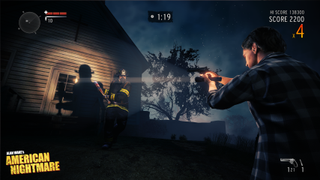
Our shootout with the freaks starts fast, with no boring walk around a dilapidated trailer park or sleepy town. The hardboiled, genre environment is established so fast that no time is wasted looking around. After grabbing the helpful handgun/flashlight combo, enemies were falling as fast as their shadowy auras could be erased. No boring voiceover on the power of dreams or the symbolism of lakes needed. And once the young lady is safe, you can speak to her as much as you want, or just exchange pleasantries and move on to the next objective, improving on the original’s pacing greatly.
2. Dialogue is much more self-aware
That pretention is erased thanks in part to the new approach to spoken dialogue. American Nightmare’s central concept is that Alan Wake, once trapped in his own books, has now been transported to the fictional Night Springs, a fake TV show from Alan’s world inspired by Twilight Zone and Outer Limits. Early in his writing career Wake did a few scripts for the eerie sci-fi anthology and now he’s inside those episodes. Thanks to that the dialogue takes on a more meta-quality, implying that world is in on the joke.
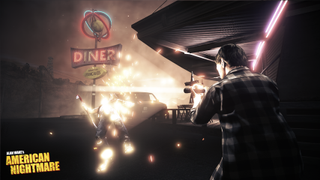
It’s not a parody of those series, though the new narrator is doing his best Rod Serling impersonation, and we preferred the faux-Twilight Zone narration to Alan Wake’s sleepy delivery in the first game. Instead of describing the loneliness of prose, it’s short, staccato description out of a dime store sci-fi with a slight wink to the audience. It aspires to be high tribute to low art, and from what we saw it looked like the team was having a lot more fun with the concept this time around.
3. Alan Wake is a more active participant in his life
The mopey Alan Wake frozen at the bottom of a lake is gone. This time the author is here to get things done. He’s by no means an action film star, but he’s got much more purpose to what he’s doing. He’s faced these monsters before, he knows the rules of this world, and he’s faster and stronger too. Instead of getting to the bottom of a mysterious town, his goal is clear: he has to save his wife from his evil double, Mr. Scratch.
Sign up to the 12DOVE Newsletter
Weekly digests, tales from the communities you love, and more
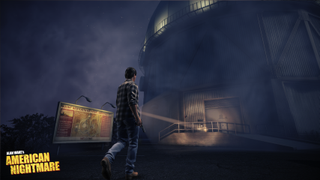
We saw that Scratch is out to kill Wake’s recently freed wife while posing as him, so Wake needs to get out now. Adding to that drive are the new manuscript pages, as he doesn’t just sleepily read it for clues, he uses it to make things happen. He finds out how to knock a satellite out of the sky and smash it into a radio tower to send it crashing down on the world in an explosive barrage wreckage that Wake narrowly avoids. Then he’s is off to his next stop with nary a moment of quiet introspection. In our short demo, American Nightmare might not have felt as smart as the last game, but it doesn't waste as much time either.
4. It has an impressive collection of weapons
Tarantino's movies aren't filled with wall-to-wall action (save for Kill Bill), but guns and violence often plays a big part in them. While the first Alan Wake had its share of weapons, many had to seem at least likely to be available in a small mountain town. Since from the outset we know this Night Springs world is fiction, thankfully the armory gets to grow beyond believability.
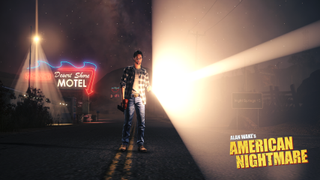
We found AK-47s, military grade rifles and handguns, along with makeshift weapons like a particularly rough nail gun. Of course those new weapons would be a waste without new baddies to shoot. After meeting some of the old crew of shadowy ciphers, we found some new guys that included one that splits into four weaker guys when you try to erase his shadow. Another was a monstrous tank of a man we faced in the demo's finale in the observatory, and our favorite shifts between a man and a murderous murder of crows at a moment’s notice. All great inclusions that add to the increased focus on action.
5. There’s a single player horde mode
Just as The Bride faces a seemingly unending stream of assassins in Kill Bill Vol 1, so too does Wake in American Nightmares new mode. Titled "Arcade Action," the story-free feature ties into Xbox Live in ways the original couldn't. Though still single player, the wave-based action is all about survival and high scores.

We began our single playthrough of the mode in a cemetery, and after a few quiet moments as we searched the surprisingly large area for ammo, the monsters were soon upon us. They come in groups, and if you think you can take them all at once, you can keep running until dozens are there, as the more you kill in a row the higher the combo goes. Should you be near death, multiple street lights are scattered around the stage that recharge your health, but once used they disappear.
In our time with it we vacillated between feeling like a darkness- conquering badass and a scared child running to the nearest night light. We did last the entire ten minutes till sunrise in the mode, but after completing it, we were sad to see we didn't top the high score. Maybe next time (and there will be a next time).
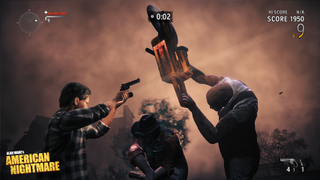
By the end of our time with American Nightmare we were glad it would only be a few months before we get the finished product. This continuation of Wake's story may not be Alan Wake 2, but it addresses many of the issues we had with a series that was already very good. We hope that the finished package maintains that same mix of amplified violence and pulpy, genre-loving themes.
Henry Gilbert is a former 12DOVE Editor, having spent seven years at the site helping to navigate our readers through the PS3 and Xbox 360 generation. Henry is now following another passion of his besides video games, working as the producer and podcast cohost of the popular Talking Simpsons and What a Cartoon podcasts.
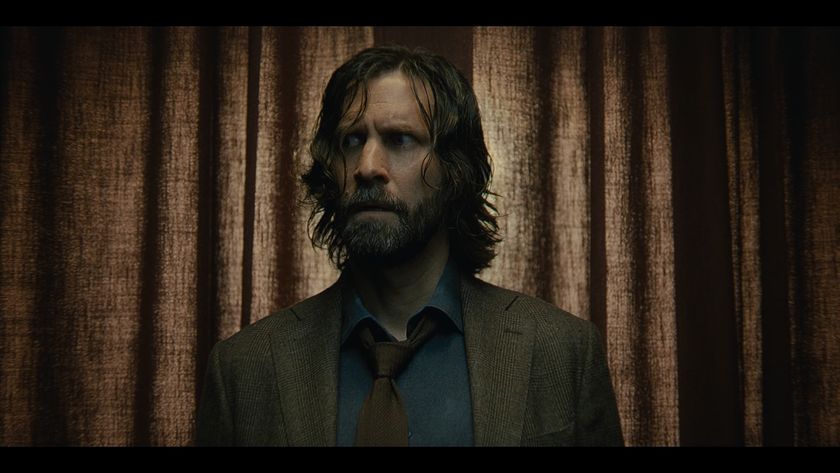
The Remedy Connected Universe that ties Alan Wake 2 and Control is "just getting started" with no endgame in sight, says Sam Lake
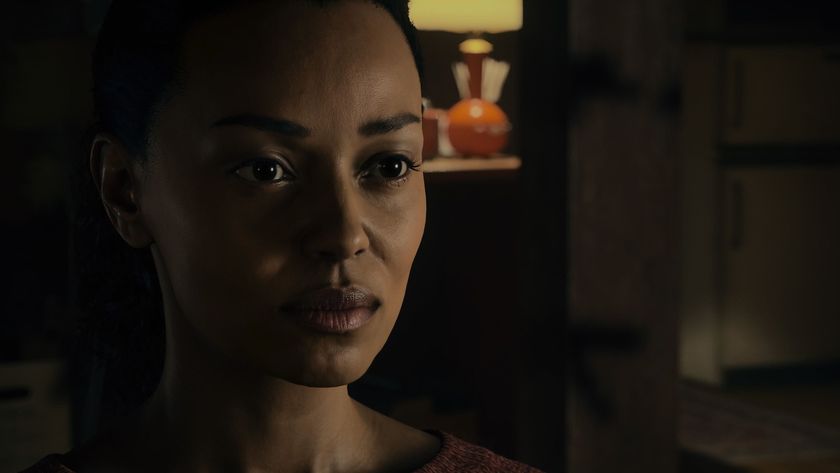
As Remedy nearly breaks even with Alan Wake 2 sales, Sam Lake tells investors "we strive to create commercial hits" but "we must never lose" the studio's special sauce











